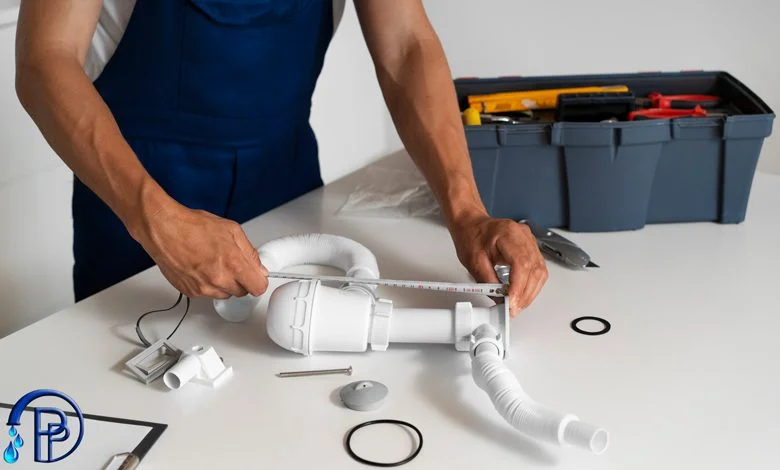
Certainly! A p-trap is a crucial component in plumbing systems, and it plays a vital role in preventing sewer gases from entering your home. Let’s dive into the details of how it works:
Shape and Purpose:
-
- P-traps are named after their shape, which resembles the letter “P” or a sideways “U.”
- They are installed beneath sinks, bathtubs, and showers to connect the fixture drain to the drainage system.
- The primary purpose of a p-trap is to create a water seal that prevents sewer gases (such as hydrogen sulfide) from escaping into your living space.
Water Seal Mechanism:
-
- The key feature of a p-trap is its u-shaped bend.
- As wastewater flows down the drain, it enters the p-trap and fills the curve with water.
- This water creates a 1½-inch to 2-inch water seal at the weir (the upper bend of the p-trap).
- The weir prevents sewer gases from passing back up the drain and into your home.
- With each use of the fixture, fresh wastewater replaces the old water in the p-trap, maintaining the seal.

Debris Collection:
-
- Besides sealing against gases, the p-trap also collects debris and solids.
- Its u-shape captures sediment, preventing it from entering the sewer system.
- This feature helps keep your drainage system clear and prevents clogs.
Installation:
-
- Sink P-Trap:
- Measure and cut the wall tube to the required length.
- Insert the wall tube into the connector, using a slip joint washer for a proper seal.
- Tighten the seal with the accompanying nut.
- Place a nut and washer on the tailpiece connected to the fixture drain.
- Join the j-bend to the tailpiece, securing the seal with another washer and nut.
- The tubular design allows easy disassembly for cleaning or snaking the drain.
- Some p-traps, like the Dearborn® Brass Tubular P-trap with Cleanout, have a convenient access point for clearing clogs.
- Sink P-Trap:
Shower P-Trap:
-
-
- Measure and cut the drain line.
- Choose from threaded, solvent, or rubber caulking connections for the drain fitting.
- Install the drain and tighten the nut.
- Use PVC or ABS fittings for directional changes.
- Locate the p-trap under the shower outlet, ensuring correct placement.
- Dry-fit the drain pipe, p-trap, and fittings before solvent welding them together.
-
Materials:
-
- Brass P-Traps:
- Aesthetically pleasing due to chrome plating.
- Prone to corrosion over time with repetitive use.
- Polypropylene P-Traps:
- Not as visually appealing but highly resistant to corrosion and acid reactions.
- Lightweight and easy to assemble or disassemble.
- Brass P-Traps:
Maintenance:
-
- P-traps generally don’t require routine maintenance.
- However, like any pipe system, they may need replacement over time.
Remember, a well-functioning p-trap ensures a healthy and odor-free plumbing system!

